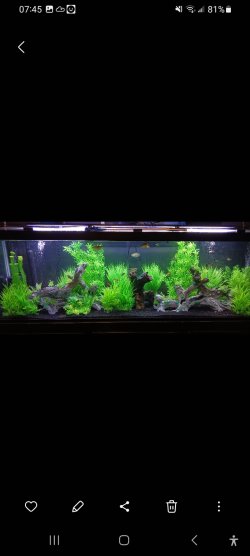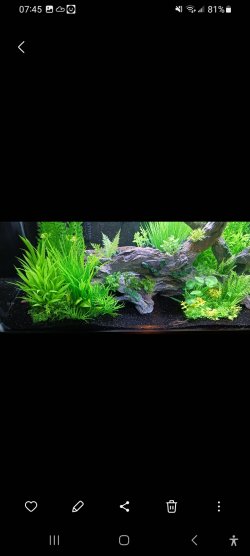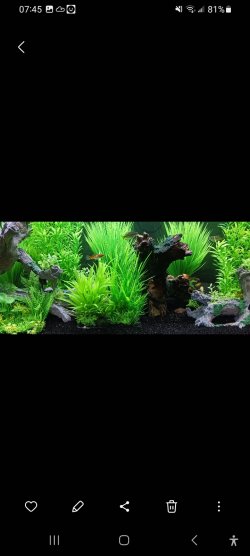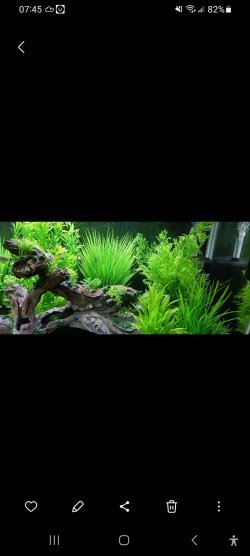Two quick corrections re this thread.
Colin made a mistake when he wrote:
The whole purpose of doing a fish in cycle is so you can add all the fish at once and not have to worry about ammonia or nitrite problems.
He meant to say doing a fishless cycle rather than a fish in cycle. Cycling with fish requires one to add fish gradually not all at once.
There are some basic facts about nitrite that folks seem to ignore or else about which they are unaware. As long as there is nitrite in the water and there is not sufficient chloride as well, the nitrite keeps entering a fish. When it does this is what happens:
Brown blood disease occurs in fish when water contains high nitrite concentrations. Nitrite enters the bloodstream through the gills and turns the blood to a chocolate-brown color. Hemoglobin, which transports oxygen in the blood, combines with nitrite to form methemoglobin, which is incapable of oxygen transport. Brown blood cannot carry sufficient amounts of oxygen, and affected fish can suffocate despite
adequate oxygen concentration in the water. This accounts for the gasping behavior often observed in fish with brown blood disease,
even when oxygen levels are relatively high.
The problem is that once inside the fish it takes a day or more for the nitrite already inside a fish to exit. But as long as there is still nitrite in the water, more nitrite is entering the fish. So, even if one does a 50% water change to lower nitrite, that does not stop the nitrite still in the water from entering the fish.
Next, while we know that the higher the pH the more toxic any level of total ammonia becomes higher. The reverse is th case for nitrite, As the pH drops, nitrite becomes more toxic.
So, the best thing we can do when we have nitrite in a tank with fish is not to change the water, but instead to add a small amount of salt. The chloride in the salt will block the nitrite from entering the fish.
Next, the permanent prevention of nitrite in a tank is the bacteria that will convert it to nitrate. These bacteria will multiply in the presence of more nitrite in the water than the current level of bacteria can handle (i.e. resulting in a test result of 0 ppm). So, to get nitrite to 0 out the fastest we do not want to lower the level in the tank. So instead of changing water, we add the salt needed to block the nitrite from entering the fish. This allows the bacteria to reproduce at the fastest rate and create the permanent solution in the least amount of time.
One last observation on blocking nitrite. Salt is cheap and it is safe to use plain table salt even iodized salt and salt which may contain some anti-caking agent. The amount of these in salt is very low and the odds are we would pickle out fish before we could add sufficient salt to make those things a problem. besides, iodized and iodine are not the same thing. Iodine is poisonous to fish.
Iodine is a halogen, and is required for vertebrates in its ionic form. Iodine is the element; iodide is the ionic form. Do not confuse either of those with “tincture of iodine” which is a topical antiseptic and quite toxic. Iodide is necessary for our metabolism as an essential part of thyroid hormone, which is our metabolic pacemaker. Soils in wide areas of this country are deficient in iodine, and this lack can result in goiter (hypertrophy of the thyroid gland, effectively from insufficient iodide intake). Thus the practice arose of adding iodide to salt intended for human consumption. This was the safest (the levels of iodide are minute) and surest way of protecting the population from this deficiency as salt is ubiquitous (all but universal) in food processing and preparation. The levels of iodide added to table salt are so small that any water-living vertebrate or invertebrate would be pickled in brine well before toxic concentrations of iodide could be reached, so that particular urban myth is without foundation. In fact, a number of our tank inhabitants need iodide- most crustaceans have a significant demand for the material, and a number of fish can develop goiter in captivity from the lack of iodine- African Rift Lake fish seem especially prone to this. The often-discussed toxicity of iodide could be considered urban myth #1.
from
https://www.thepufferforum.com/forum/library/water-filtration/thesaltoftheearth/#more-137
Next. the anti-caking agenst use in salt are also so small they are not a threat:
Salt, sodium chloride, is hydroscopic- exposed to air of more than Sahara-at-midday humidity, it will pick up moisture from the air on the surfaces of the individual crystals, which melt at the surface and cement themselves together- in short, they clump. The salt shaker does not work with clumpy salt, so additives are used to block the clumping. Arrowroot is common for this purpose, but others are possible. Again, as with iodine, quantities are small (but larger than with iodide), and are food-safe and fish-safe
Kosher salt is commonly suggested as an alternative to table salt, as it does not have iodide added. This of course is a response to salt myth #1. Others gasp in horror at this suggestion, as kosher salt may have yellow prussiate of soda (the sodium salt of prussic acid, a ferro- or ferricyanide) as its anti-caking agent. Horrors! That is a cyanide compound! You are sending your fish to the gas chamber and it will kill them instantly! Horsefeathers. Once again, the quantity is tiny, food-safe, and the fish would be pickled in brine long before potentially toxic levels could be reached. Salt urban myth #2 down.
from the same source as above.
There is another way tyo get the chloride into a tank and that is ti use calcium chloride. But this if more expensive than salt and the more water volume one needs to treat the more it caists. We all have table salt on hand but who has calcium chloride on hand?
So, if we have ammonia the best solution is to change water to protect the fish. If we have a build up of nitrate, the best way to handle it is to change water. But, if we have nitrite, we can "raise shields" to protect the fish by adding salt in the small amounts needed to do so.
Lastly, diferent fish species have different tolerances for nitrite. Even indivuals of the same species can have different tolerances. Rather than try to sort this all out, it is a lot easier just to add enough salt to protect all the fish.






